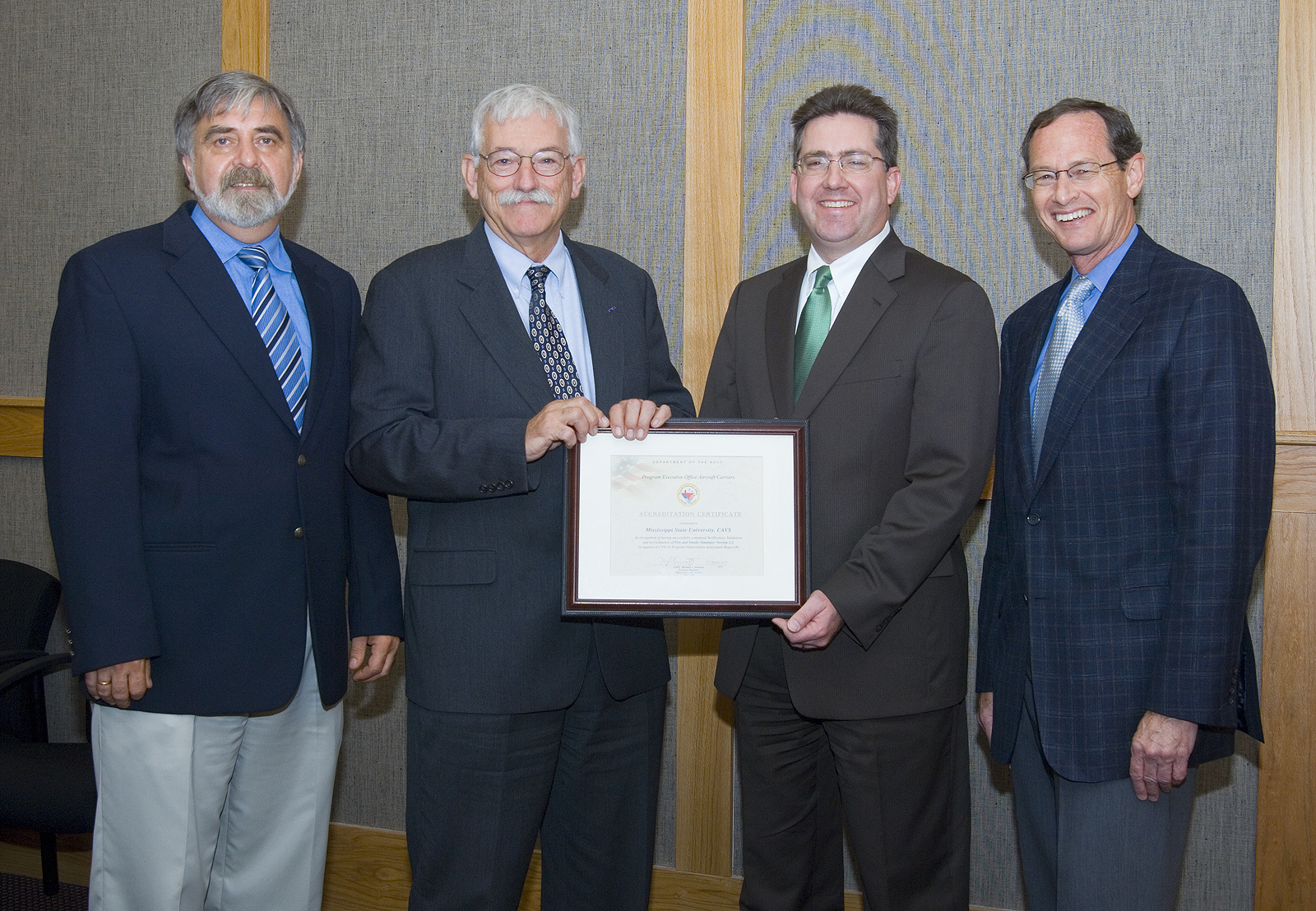Contact: Robbie Ward

STARKVILLE, Miss.--Navy aircraft carriers now have a new safeguard to protect against fires and other related dangers.
The service's first fire and smoke simulation computer model developed by Mississippi State's Center for Advanced Vehicular Systems is receiving a certificate of verification, validation and accreditation from the Washington, D.C.-based Naval Research Laboratory. In accepting the accolade Tuesday [June 19], university scientists said the program creates a powerful training tool to prevent injuries and death and decrease damages to the large ships.
Tomasz A. Haupt, associate research professor and manager of CAVS' cooperative computing laboratory, said basic accessibility is among the program's greatest strengths. "Anyone can use it," he explained.
Whether a deck fire or one deep within the mighty craft's complex interior, 21st century sailors will use the training model to determine best practices for safety and extinguishing fires. The CAVS' high-technology computing power that determined the best ways to react to shipboard fire and smoke is expected to result in considerable savings.
"The dollar savings is incredible," said Frederick W. Williams, director of Navy Technology Center for Safety and Survivability, in presenting the certification. "The accuracy of models is impeccable for what it's used for," he added.
Since carrier fires can result in millions of dollars in crippling damage, constant testing is essential to assure the best safety practices. Now, instead of a single smoke-and-fire test situation costing $250,000, Navy researchers can employ virtually limitless tests by using the MSU-designed computer simulation model.
Given dozens of complex variables, the model develops thousands of possible simulations in a short period of time. An aircraft door can have, for example, more than 3,000 different positions, each of which may spread fire and smoke differently.
In addition to surface ships, the CAVS' model developed through a partnership among MSU, Naval Research Laboratory and Hughes Associates Inc. of Baltimore, Md., has the potential to assist with safety issues associated with submarines, aircraft and buildings. Hughes is a global company specializing in fire safety and protection.
In expressing his gratitude to Haupt and other MSU researchers, Williams said the certified training will be employed in the Navy's next-generation CVN21 program, which is replacing the current Nimitz class of nuclear-powered carriers. Authorized by the 2006 Congress, the USS Gerald Ford will be lead ship of the CVN-21 class.
CAVS is an interdisciplinary Mississippi State center that provides engineering, research, development, and technology transfer teams focused on solving complex computer-based problems. Scientists there have worked on the model simulation since 2002 with some $150,000 in annual funding from the U.S. Office of Naval Research.
Along with computer simulations, researchers utilized an experimental ship based in Mobile, Ala., to verify model accuracy.
MSU formed an additional partnership on the project with the Northrop Grumman Corp.'s Pascagoula shipbuilding operation, sharing information that will help improve the safety of its vessels currently under construction.
Additionally, Navy leaders will use the model to assist with general ship designs and as a tactical tool. In combat situations, for example, the model can determine how smoke and fire caused by enemy weapons would spread for up to 30 minutes on an aircraft carrier.
While the technology now is being used for military purposes, Williams observed that it likely will filter into commercial cruise ship and other civilian industries.
NEWS EDITORS/DIRECTORS: For more information on the program, contact Dr. Haupt at 662-325-5433 or haupt@cavs.msstate.edu. Dr. Williams may be reached at 202-767-2476 or fwilliams@ccs.nrl.navy.mil.
For more information about Mississippi State University, see http://www.msstate.edu/.